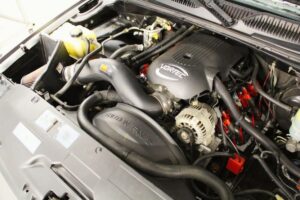Japan has some of the most well-known car brands in the world. Who are the big car manufacturers from Japan? How many Japanese car manufacturers are there?
Currently, there are around 11 very active car manufacturers in Japan. These are the carmakers that produce the most popular Japanese car brands in the world.
Based on the time that they started producing their cars, these Japanese car manufacturers are:
- Mitsubishi
- Daihatsu
- Suzuki
- Hino
- Honda
- Isuzu
- Mazda
- Nissan
- Toyota Motor Corporation
- Subaru
- Lexus
Some of these automakers are so successful that they have developed their own luxury car brand. There are other smaller Japanese carmakers, but they are not as well-known as the car brands listed above.
Read on to learn more about the top 11 Japanese car manufacturers, the brief history for each brand, and their top cars.
11 Top Japanese Car Manufacturers

Some of the manufacturers that started the automobile industry in Japan in the early 1900s are still active today.
Based on the year they started their car production, the Japanese manufacturers still in operation are the following:
- Mitsubishi – from 1873 to 1950, then from 1964 to present
- Daihatsu – from 1907 to the present, this company is now wholly owned and a subsidiary of Toyota Motor Corporation since August 2016
- Suzuki – from 1909 to present
- Hino – from 1910 to present
- Honda – from 1946 to present
- Isuzu – from 1916 to the present (Its parent company, Ishikawajima-Harima Heavy Industries Co., actually started in 1853)
- Mazda – from 1920 to present
- Nissan – from 1933 to the present, the company name was formerly Datsun
- Toyota Motor Corporation – from 1937 to the present, this company was actually a spin-off of the Toyota Industries Corporation also in 1937
- Subaru – from 1945 to the present, the company name was formerly Nakajima Aircraft Company
- Lexus – from 1989 to the present, this company is producing the luxury car brand of Toyota
Next, let’s look at the top Japanese car manufacturers by production volume.
Top Japanese Car Manufacturers by Production Volume
The top Japanese automobile manufacturers with the highest production volume from year to year, starting from 2007 to 2012, are shown in the following table. The figures are taken from the Japan Automobile Manufacturers Association. [1]
Passenger Cars
| Manufacturers | 2007 | 2008 | 2009 | 2010 | 2011 | 2012 |
| Toyota | 3,849,353 | 3,631,146 | 2,543,715 | 2,993,714 | 2,473,546 | 3,170,000 |
| Nissan | 982,870 | 1,095,661 | 780,495 | 1,008,160 | 1,004,666 | 1,035,726 |
| Honda | 1,288,577 | 1,230,621 | 812,298 | 941,558 | 687,948 | 996,832 |
| Suzuki | 1,061,767 | 1,059,456 | 758,057 | 915,391 | 811,689 | 896,781 |
| Mazda | 952,290 | 1,038,725 | 693,598 | 893,323 | 798,060 | 830,294 |
| Daihatsu | 648,289 | 641,322 | 551,275 | 534,586 | 479,956 | 633,887 |
| Subaru | 403,428 | 460,515 | 357,276 | 437,443 | 366,518 | 551,812 |
| Mitsubishi | 758,038 | 770,667 | 365,447 | 586,187 | 536,142 | 448,598 |
| Others | 25 | 30 | 0 | 0 | 0 | 0 |
| Total | 9,944,637 | 9,928,143 | 6,862,161 | 8,310,362 | 7,158,525 | 8,554,219 |
Trucks
| Manufacturers | 2007 | 2008 | 2009 |
| Toyota | 291,008 | 271,544 | 178,954 |
| Suzuki | 156,530 | 158,779 | 150,245 |
| Daihatsu | 138,312 | 151,935 | 132,980 |
| Isuzu | 236,619 | 250,692 | 118,033 |
| Nissan | 188,788 | 189,005 | 109,601 |
| Mitsubishi | 88,045 | 83,276 | 61,083 |
| Hino | 101,909 | 101,037 | 62,197 |
| Subaru | 72,422 | 64,401 | 51,123 |
| Mitsubishi Fuso | 131,055 | 115,573 | 49,485 |
| Honda | 43,268 | 33,760 | 28,626 |
| Mazda | 43,221 | 39,965 | 23,577 |
| UD Trucks | 44,398 | 45,983 | 18,652 |
| Other | 2,445 | 2,449 | 545 |
| Total | 1,538,020 | 1,508,399 | 985,101 |
Top Japanese Car Manufacturers by Overall Sales in the U.S.
The top Japanese car brands that sold the most number of passenger cars in the fourth quarter of 2020 are reflected in the following table. From the figures shown, it appeared that Toyota still led every Japanese and Asian car brand to overall car sales in the United States.
The second-largest car passenger market in the world is the United States. Moreover, among the best-selling Japanese brands of cars include the Toyota Corolla, the Honda Civic, and the Toyota Camry.
Lastly, mid-size passenger cars are proving to be increasing in popularity in the U.S. car market.
| Manufacturers | Total Units Sold, 2020 4th Quarter |
| Toyota | 567, 671 units |
| Honda | 324, 739 units |
| Nissan | 222, 643 units |
| Subaru | 175, 382 units |
| Lexus (Toyota) | 92, 954 units |
| Mazda | 75, 796 units |
| Acura (Honda) | 41, 329 units |
| Infiniti (Nissan) | 20, 482 units |
| Mitsubishi | 14, 769 units |
Finally, let’s look at the top 10 best-selling Japanese car brands in the world.
Top 10 Best-Selling Japanese Car Brands in the World
The top 10 best-selling Japanese car brands all over the world are the following:
1. Toyota

Toyota is number one on our list of Japanese car manufacturers in terms of the total number of units sold worldwide in 2017. In fact, it was able to sell 10.35 million units, including 1.52 million electric vehicles, in 2017 around the world.
This figure is considerably higher than those which Suzuki and Honda combined were able to report.
Toyota has performed consistently throughout the four quarters of 2017. As a matter of fact, it has successfully sold high numbers of Sienta, Aqua, and Prius around the world. Indeed, these models proved to be Toyota’s best-selling cars.
Toyota has increased its production of electric and hybrid cars. The company is also positioning itself as a top player in the world’s electric car market.
2. Nissan
A far second is Nissan. 2017 is a better year for Nissan compared to the previous years. In fact, its total sales reached a record-high of 5.77 million units-this represented a 2.6% year-on-year increase. Specifically, among the brand’s top-selling cars in the global market are the Altima and Sentra.
Nissan makes and sells more than 60 car and truck models under the Datsun, Infiniti, and Nissan brands. Thus, it is a full-line vehicle manufacturer.
3. Honda
Third among the top 10 is Honda, which was able to sell 5 million units in 2017, a little less than half of what Toyota was able to report. Moreover, among the highest sellers of Honda are the Vezel, the City, and the Fit.
These three car models’ overall sales have contributed greatly to Honda’s overall performance in the international car market in 2017. At the end of 2017, Honda attained more than $60 billion annual revenue, enabling it to list the top 10 carmakers globally.
4. Suzuki
Fourth on the list is Suzuki. It was able to sell 3.16 million units globally in 2017. And this sales performance was consistent with what the company has shown in the preceding years.
Also, the Suzuki Wagon R contributed much to this sales success being one of the most popular cars in the Suzuki lineup.
Suzuki can perform well because it is fully supported by its global operations consistently. It maintains 35 production facilities in 23 countries across the planet. Lastly, 45,000 employees staff these manufacturing plants.
Indeed, car sales are ably handled by 133 Honda distributors in 192 countries around the world.
5. Lexus
Surprisingly, a luxury vehicle has claimed its place among the top 10 best-selling Japanese car brands. Lexus is Toyota’s luxury model with a hefty price, but it still managed to sell 3 million units globally in 2017.
Surprisingly, this is a slight 4% decrease in its previous year’s sales performance.
6. Daihatsu
Seventh on our list of Japanese car manufacturers is Daihatsu, which has posted an 8% increase in sales in 2017. Greatly contributing to this sales performance are the Mira, Tanto, and Hijet.
While it is not a popular as the top three, Daihatsu is still one of the oldest surviving Japanese car brands today.
7. Mazda
In 2017, Mazda was able to sell a total of 1.6 million units, making it number 8 spot on our top ten Japanese car brands list. However, this company faced serious losses the previous year, which is one of the major reasons it could only sell fewer vehicles.
8. Subaru
Subaru is owned by the Japanese conglomerate Subaru Corporation, which is formerly called Fuji Heavy Industries. Moreover, the Crosstrek and the Outback models of Subaru set their own particular record sales in 2017 in the United States.
Thus, enabling the brand to make it to number eight on our list.
9. Mitsubishi
Mitsubishi cars are made by Mitsubishi Motors Corporation, a multinational automotive manufacturer based in Minato, Tokyo, Japan. This company experienced a decline in sales in 2017 but still made it to the top 9.
10. Isuzu
Bringing up the rear of our top ten best Japanese carmakers is Isuzu Motors Ltd. However, the main focus of this Japanese company is the production of diesel engines and commercial vehicles. Even if Isuzu is tenth on our list, it has experienced increased car sales in recent years.
There is every reason to believe that it’ll improve its ranking in the following years.
How the U.S. Benefits from Japanese Car Makers
There is no question that Americans have already adopted these Japanese cars. They have proven that they are also as reliable and efficient as American-made cars. The market of the Big Three has considerably shrunk because of the competition offered by these Japanese cars.
Underneath all these is the fact that there are some benefits the U.S. has enjoyed with the presence of these Japanese cars on its soil. For instance, the U.S. manufacturing plants of these Japanese cars increased employment in the United States by almost 30%.
Additionally, the biggest company of them all, Toyota, has invested an additional $700 million to hire new workers assigned to Indiana’s manufacturing facilities.
Finally, these top 10 Japanese manufacturers are expected to continue their presence and increase their dominance in the car manufacturing industries worldwide.
Birth and Growth of the Top Japanese Car Manufacturers
The first Japanese vehicle that was made and sold was a bus powered by a steam engine. Torao Yamaha made it. Before the Second World War, the majority of the automobiles sold in Japan were European-based.
1917
In 1917, Mitsubishi introduced its Model A which became the best-selling car at that time. Then Honda and Nissan established their car manufacturing operations in the 1930s. Only in 1937 did
Toyota enters the automobile industry in Japan.
In the beginning, only a few automobiles were sold in Japan. Consequently, the cost of a car was too much for the average Japanese family to afford. This situation drastically changed for the better when the ‘kei’ car was released in the 1960s.
1958

While these small cars had low-quality engines, their prices were very cheap. Subaru was the first Japanese automaker to make a ‘kei’ car in 1958. Suzuki, Mazda, and Mitsubishi launched their own versions later on.
1970s-1990s
Car making increased rapidly in Japan from the 1970s to the 1990s when the country oriented its manufacturing and marketing efforts domestically and internationally from 1980 to 1990. Eventually, Japan overtook the United States as the leader in car manufacturing.
In fact, it reached a production capacity of up to 13 million cars per year, a large portion of it going to exports.
From this time, the car industry in Japan saw rapid growth. Today, Japan’s most profitable exports are automobiles. Moreover, as of 2019, Toyota was named the largest automaker in the world.
Lastly, today, the best-selling passenger car in the United States is no longer made by one of the Big Three.
This car is the RAV 4, made by Toyota. Another Japanese manufacturer, Honda, is enjoying huge success in the American market as well. Besides other notable Japanese manufacturers, both carmakers are cornering enormous vehicle sales in the United States.
Furthermore, today, Japan’s automobile industry is among the most prominent and biggest industries on earth. This country has consistently ranked as one of the top three countries with the most cars produced since the 1960s. Indeed, it has surpassed Germany in this respect.
Conclusion: Top Japanese Car Manufacturers
These Japanese car manufacturers are active in producing their car models since they started their operations long ago. This list is in chronological order based on the time they were established:
- Mitsubishi – established in 1873
- Daihatsu – founded in 1907
- Suzuki – started operations in 1909
- Hino – began operating in 1910
- Honda – founded in 1946
- Isuzu – established in 1916, but its parent company, Ishikawajima-Harima Heavy Industries Co., actually started in 1853
- Mazda – started operations in 1920
- Nissan – founded in 1933, the company name was formerly Datsun
- Toyota Motor Corporation – established in 1937, this company was a spin-off of the Toyota Industries Corporation also in 1937
- Subaru – established in 1945, the company name was formerly Nakajima Aircraft Company
- Lexus – began operations in 1989, this company is producing the luxury car brand of Toyota
Japan’s largest industry includes the automotive industry. Meanwhile, the United States is one of the biggest markets for Japanese manufactured cars. The Toyota Corolla, the Honda Civic, and the Toyota Camry are some of the best-selling automotive brands and models.
Lastly, in exchange, the U.S also benefits from these companies through employment.

![Interference Engine List [and Non-Interference Engine List] interference engine list](https://roadsumo.com/wp-content/uploads/2021/06/interference-engine-list-150x150.jpg)
![List of Foreign Cars [Top 18] foreign cars](https://roadsumo.com/wp-content/uploads/2021/06/foreign-cars-150x150.jpg)
![MS-6395 Oil List [What are They and Their Benefits] MS-6395 Oil List](https://roadsumo.com/wp-content/uploads/2021/12/MS-6395-oil-list-150x150.jpg)





